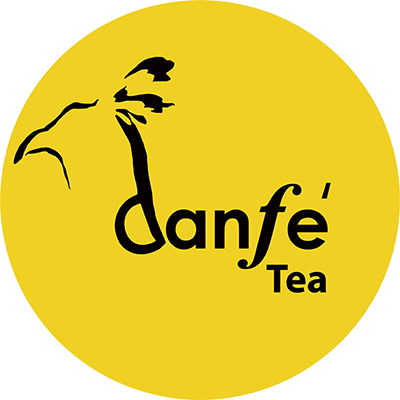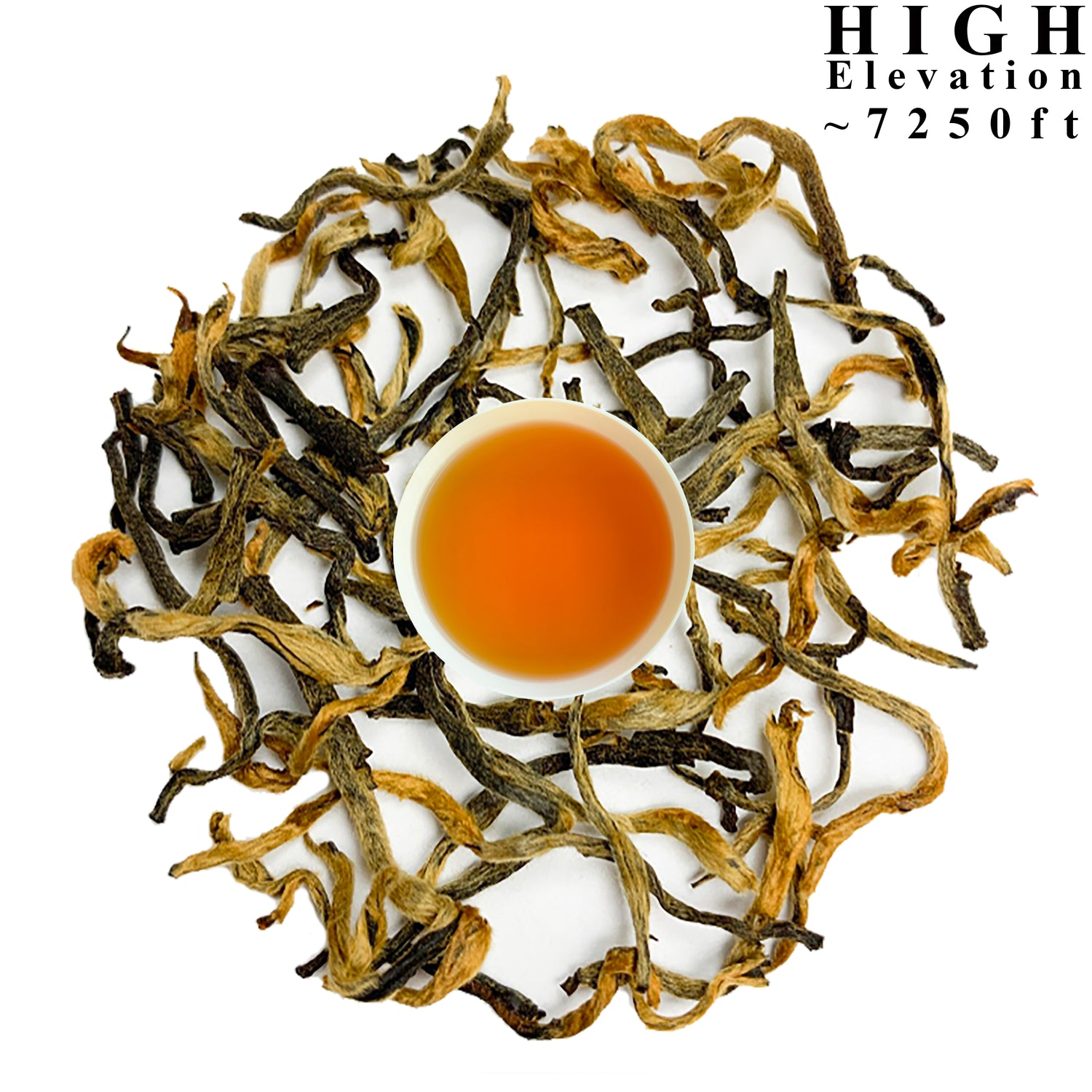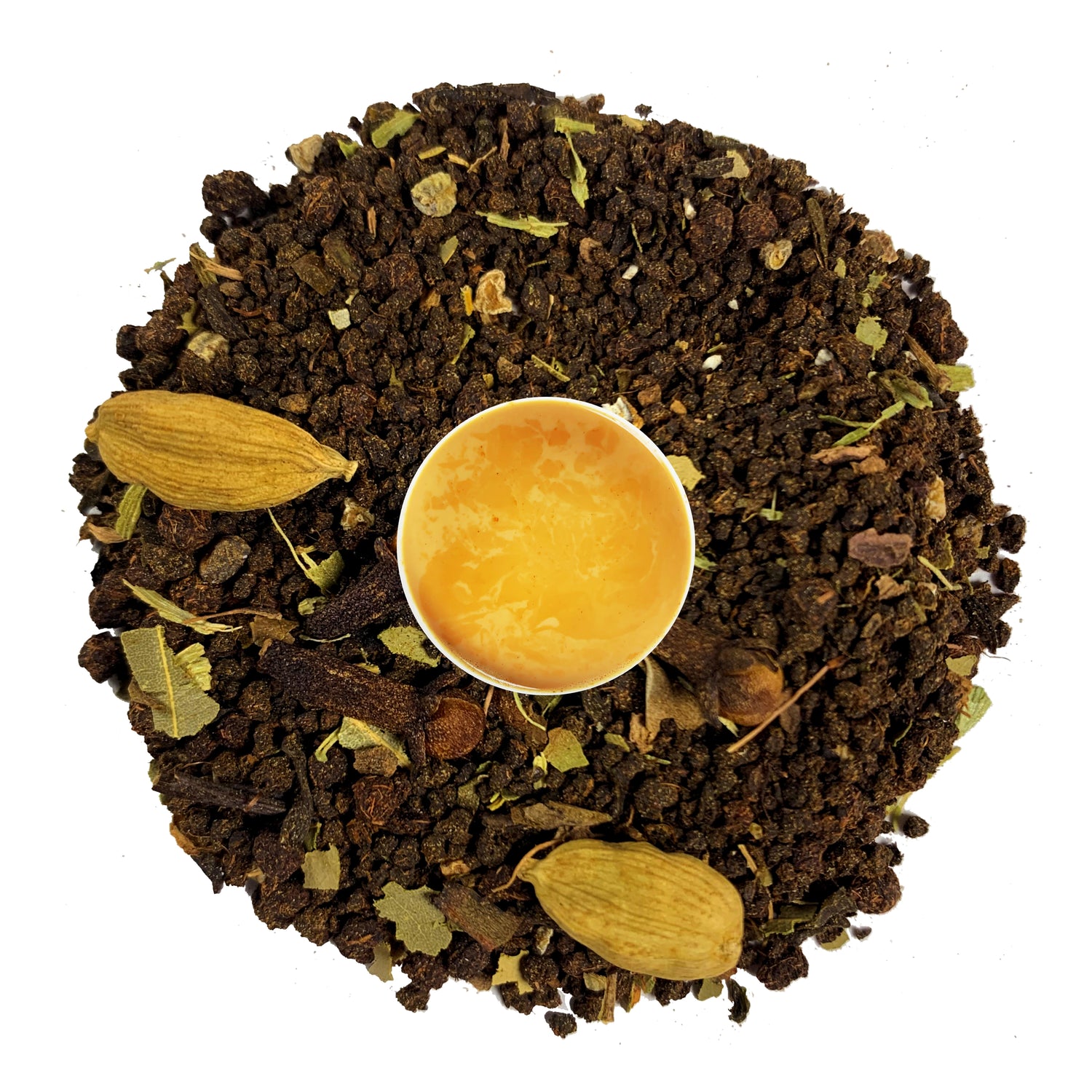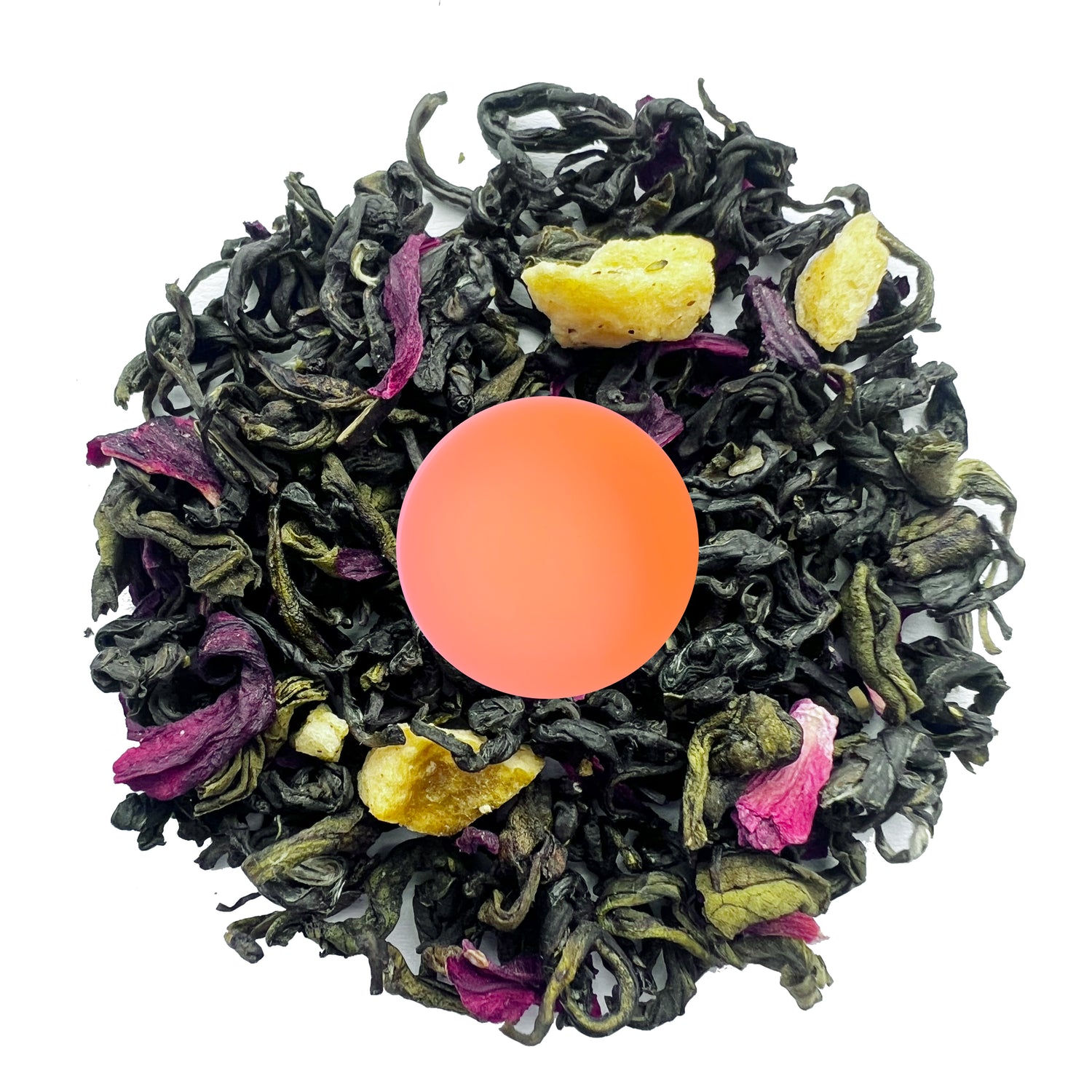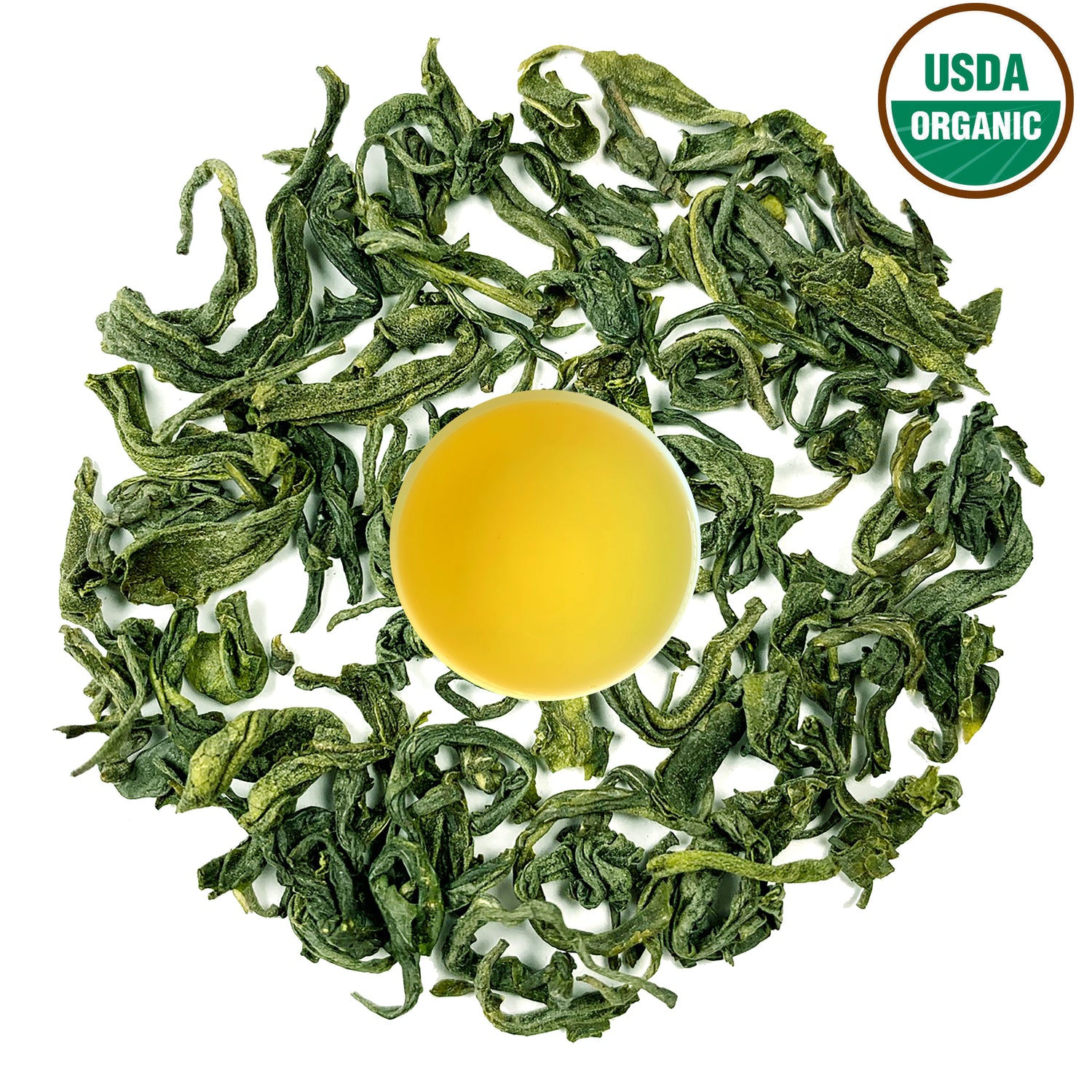
Why Is Loose Leaf Jasmine Green Tea More Expensive?
Have you ever wondered why loose leaf jasmine green tea often costs more than its bagged counterpart? This article delves into the price differences between these two tea formats, examining their cost structures and value propositions. You'll learn about the factors influencing pricing, compare the actual price points, and understand the benefits beyond the price tag. By the end, you'll be equipped to make an informed decision on which type of jasmine tea, including options from Danfe Tea's Nepal jasmine green tea selection, best suits your needs and budget.
Key Takeaways
- Loose leaf jasmine green tea offers superior quality and flavor compared to bagged varieties
- Higher prices for loose leaf teas reflect better leaf quality and more labor-intensive production processes
- Loose leaf jasmine green tea can be steeped multiple times, making it cost-effective in the long run
- Consumer feedback often favors loose leaf jasmine green tea for its fuller flavor and aroma
- Regional differences in pricing exist, with teas generally costing less in tea-producing areas
Analyzing the Cost Structure of Loose Leaf Jasmine Green Tea

Dive into the cost structure of loose leaf jasmine green tea, exploring factors that influence pricing. You'll learn how quality and flavor justify costs, including jasmine green tea benefits, evaluate packaging strategies, and understand production expenses. This analysis helps you appreciate the value of premium loose leaf teas, including cold brew detox tea and nepal green tea, often enjoyed in a glass teapot with infuser. Additionally, danfetea offers nepal jasmine green tea, providing a unique blend for tea enthusiasts, including jasmine tea.
Identifying Factors Influencing Loose Leaf Pricing
You'll find that several factors influence the pricing of loose leaf jasmine green tea. The quality of the tea leaves, including their origin and harvesting method, plays a significant role in determining the cost. Higher-grade leaves, often used in premium green tea and herbal tea blends like cold brew detox tea, command higher prices due to their superior taste and aroma.
Another key factor is the production process. Loose leaf teas require more careful handling and processing than tea bags, which affects their price. The scenting process for nepal jasmine green tea, involving repeated exposure to fresh jasmine blossoms, also adds to the cost. These factors contribute to the rich flavor profile you experience when brewing loose leaf tea from danfetea, whether it's a refreshing cold brew detox tea or a robust black tea.
Comparing Quality and Flavor to Justify Costs
When you compare loose leaf jasmine green tea to bagged varieties, you'll notice a significant difference in quality and flavor. Loose leaf teas, including white tea and oolong, often have a more complex and nuanced taste profile. The larger, whole leaves used in loose tea allow for better infusion, resulting in a richer flavor and aroma that justifies the higher cost.
You'll also find that loose leaf jasmine green tea typically has a more pronounced jasmine scent and less bitter undertones. This is because the tea leaves have more room to expand in water, releasing their full flavor potential. Additionally, loose leaf teas often retain more of their natural caffeine content and beneficial compounds, which can contribute to a more satisfying and potentially healthier jasmine tea experience.
Evaluating Packaging and Marketing Strategies
When you examine loose leaf jasmine green tea packaging, you'll notice it often comes in resealable pouches or tins that protect the delicate leaves. These containers not only preserve the tea's freshness but also showcase its premium quality, much like packaging for other loose leaf varieties such as rooibos or masala chai. The packaging design and materials contribute to the overall cost but ensure you receive a high-quality jasmine tea product.
Marketing strategies for loose leaf teas, including jasmine green tea, often emphasize their versatility. You'll find promotions highlighting how these teas can be enjoyed hot, as refreshing iced tea, or even as a base for creative spice blends. This focus on versatility and quality in marketing campaigns helps justify the higher price point of loose leaf teas compared to bagged alternatives.
Understanding Production and Sourcing Expenses
When you buy loose leaf jasmine green tea, you're paying for more than just the leaves. The production process involves careful harvesting, processing, and scenting with fresh jasmine flowers. These steps require skilled labor and time, which influences the sale price. You'll often find these premium teas packaged in high-quality tins or pouches, ready to be brewed in your favorite tea bag or mug.
Sourcing expenses also play a role in the cost structure. Tea producers often source leaves from specific regions known for their quality, which can increase procurement costs. Additionally, factors like sustainable farming practices or organic certifications can add to the expenses. When you add jasmine tea items to your cart, remember that these production and sourcing costs contribute to the premium quality of loose leaf jasmine green tea.
Loose leaf jasmine green tea reveals its secrets. Now, let's uncover the mystery of bagged varieties.
Examining Bagged Jasmine Green Tea Pricing

You'll find that bagged jasmine green tea often differs in price from loose leaf varieties. We'll explore factors like production costs, convenience, brand influence, and consumer preferences. From lemon-infused blends to chamomile mixes, you'll discover how various elements affect pricing. We'll also touch on popular flavors like vanilla and berry, helping you understand the value behind your tea choices.
Investigating Cost Factors Specific to Bagged Tea
You'll find that bagged jasmine green tea has unique cost factors. The production process involves packaging individual sachets, which requires specialized equipment and materials. While this adds to the overall cost, it offers you the convenience of easy brewing without the need to boil loose tea bag s, making it a popular choice for those seeking a quick antioxidant boost.
The quality of tea used in bags can vary, affecting both price and potential health benefits. Some brands use higher-grade tea leaves, which may help with inflammation or headaches, justifying a higher price point. However, you'll also find more affordable options that still offer the characteristic jasmine flavor, though they might use lower-grade tea leaves or artificial flavorings.
Assessing Convenience and Its Impact on Price
You'll find that bagged jasmine green tea offers unmatched convenience, which often comes at a premium. The ease of dropping a tea bag into hot water appeals to busy tea drinkers, especially those who enjoy blending jasmine with other flavors like coconut or peppermint. This convenience factor allows manufacturers to charge slightly more for bagged teas compared to loose leaf options.
However, you should consider that the convenience of bagged teas sometimes comes at the cost of quality. While some premium brands use whole sencha leaves in their bags, many use smaller pieces or dust, which can affect the flavor and potential health benefits of the herb. This trade-off between convenience and quality is reflected in the price, with higher-quality tea bag teas often costing more than their lower-grade counterparts.
Analyzing Brand Influence on Pricing Variations
You'll notice that brand recognition plays a significant role in bagged jasmine green tea pricing. Well-known brands can charge a premium for their products, even if the quality is comparable to lesser-known brands. When you're stocking your pantry, you might find yourself reaching for a familiar brand, trusting their reputation for consistent flavor and quality.
However, don't overlook lesser-known brands, as they might offer excellent value. Some boutique brands specialize in unique blends, like jasmine green tea with pear or cardamom, which can justify higher prices. Remember, a higher price doesn't always guarantee better quality - sometimes, you're paying for the brand name rather than superior tea leaves. Try measuring out a teaspoon from different brands to compare flavor and aroma.
Studying Consumer Preferences in Purchasing Choices
You'll find that your purchasing choices for bagged jasmine green tea often reflect personal preferences and lifestyle factors. Convenience plays a big role, with many opting for tea bag teas due to their ease of use. You might prefer bagged teas if you're always on the go or don't want to fuss with loose leaves and strainers.
Price sensitivity also influences your choices. While some of you are willing to pay more for premium bagged teas, others prioritize affordability. Your decision often depends on how much you value the jasmine flavor and potential health benefits. Consider these factors when choosing your tea:
- Convenience and ease of use
- Price point and budget
- Brand reputation and trust
- Flavor intensity and quality
- Packaging sustainability
The numbers tell a tale of value. Now, let's unpack the real story behind loose leaf and bagged tea.
Comparing Price Points Between Loose Leaf and Bagged Tea

You'll find that comparing loose leaf and bagged jasmine green tea prices reveals interesting insights. We'll explore average price ranges, seasonal variations, market trends, and regional differences. This analysis will help you understand why prices differ and how to make informed purchasing decisions for your tea collection.
Evaluating Average Price Ranges for Each Type
You'll find that loose leaf jasmine green tea typically commands a higher price point than bagged varieties. On average, loose leaf options range from $0.30 to $1.00 per cup, depending on quality and brand. This higher cost reflects the superior leaf quality and more labor-intensive production process.
Bagged jasmine green tea, in contrast, usually falls between $0.10 to $0.50 per cup. The lower price point is due to mass production methods and often lower-grade tea leaves. However, premium bagged options can approach loose leaf prices. Consider these factors when comparing prices:
- Leaf quality and grade
- Production method
- Brand reputation
- Packaging type
- Organic or conventional farming
Examining Availability and Seasonal Variations in Pricing
You'll notice that jasmine green tea prices fluctuate throughout the year. Loose leaf varieties often see more pronounced seasonal changes due to harvest timing and scenting processes. During peak jasmine blooming season, usually in summer, you might find fresher, more fragrant teas at slightly higher prices.
Bagged jasmine green teas typically show less seasonal price variation. Their mass production and longer shelf life allow for more stable pricing year-round. However, you might spot promotional discounts during major shopping seasons or holidays, offering opportunities to stock up on your favorite blends at lower sale price.
Identifying Common Market Trends in Tea Pricing
You'll notice that jasmine green tea prices generally follow broader tea market trends. Both loose leaf and bagged varieties have seen gradual price increases over recent years due to rising production costs and growing demand for premium teas. However, loose leaf teas often experience more volatility in pricing due to their direct connection to harvest quality and seasonal factors.
When shopping for jasmine green tea, you'll find that online retailers often offer competitive prices compared to physical stores. This trend applies to both loose leaf and bagged options, with many online platforms providing a wider selection and frequent promotions. Keep an eye out for bundle deals or subscription services, which can offer significant savings on your favorite jasmine green teas. Check out bundle deals for more savings.
Analyzing Regional Differences in Tea Costs
You'll find that jasmine green tea prices vary depending on your location. In regions closer to tea-producing areas, like parts of Asia, you might encounter lower prices for both loose leaf and bagged varieties. This is due to reduced transportation costs and more direct access to suppliers.
When shopping in North America or Europe, you'll likely notice higher prices for jasmine green tea, especially for premium loose leaf options. These price differences reflect import costs, taxes, and local demand. To get the best value, consider purchasing from specialty tea shops or online retailers that source directly from producers:
|
Region |
Loose Leaf (per oz) |
Bagged (per box) |
|
Asia |
$2 - $5 |
$3 - $7 |
|
North America |
$4 - $10 |
$5 - $12 |
|
Europe |
$5 - $12 |
$6 - $15 |
Price isn't everything. Quality and experience matter too.
Understanding Value Beyond the Price Tag

When comparing loose leaf and bagged jasmine green tea, you'll find value beyond just the price tag. You'll discover how quality and taste differ, explore health benefits that might justify higher costs, consider longevity and brewing options, and review consumer feedback. Understanding these factors helps you make informed choices about which type offers the best value for your needs tea bag.
Assessing Quality and Taste Benefits of Loose Leaf
You'll find that loose leaf jasmine green tea offers superior quality and taste compared to bagged varieties. The larger, whole leaves used in loose tea allow for better infusion, resulting in a more complex and nuanced flavor profile. When you brew loose leaf tea, you'll notice a more pronounced jasmine scent and less bitter undertones.
The quality difference stems from the production process. Loose leaf teas undergo less processing, preserving more of the natural compounds that contribute to flavor and aroma. This minimal processing also means you're getting a purer tea experience. Consider these factors when assessing the quality and taste benefits of loose leaf jasmine green tea:
- Leaf size and integrity
- Intensity of jasmine aroma
- Complexity of flavor notes
- Smoothness and lack of bitterness
- Visual appeal of the brewed tea
Exploring Health Benefits That Justify Higher Costs
You'll find that loose leaf jasmine green tea often justifies its higher cost through enhanced health benefits. The larger, intact leaves retain more beneficial compounds like catechins and polyphenols, which are known for their antioxidant properties. These compounds can support your overall health, potentially boosting your immune system and aiding in weight management.
When you brew loose leaf jasmine green tea, you're likely to extract more of these beneficial compounds compared to bagged varieties. The higher concentration of these health-promoting elements can contribute to improved heart health and reduced risk of certain chronic diseases. While the initial cost might be higher, the potential long-term health benefits make loose leaf jasmine green tea a valuable investment in your well-being.
Considering Longevity and Brewability of Each Type
You'll find that loose leaf jasmine green tea generally offers better longevity and brewability compared to bagged varieties. Loose leaves can be steeped multiple times, often producing 2-3 flavorful infusions from a single serving. This reusability makes loose leaf tea more cost-effective in the long run, despite its higher initial price.
When it comes to brewability, loose leaf jasmine green tea gives you more control over the strength and flavor of your brew. You can easily adjust the amount of leaves and steeping time to suit your taste preferences. Consider these factors when comparing the longevity and brewability of loose leaf and bagged jasmine green tea:
- Number of potential infusions
- Flavor consistency across multiple steeps
- Ability to control brew strength
- Ease of adjusting serving size
- Storage lifespan of the tea
Reviewing Consumer Feedback and Market Perception
You'll find that consumer feedback often favors loose leaf jasmine green tea for its superior taste and quality. Many tea enthusiasts appreciate the fuller flavor and aroma of loose leaf varieties, citing a more authentic tea experience. However, bagged jasmine green tea still holds a significant market share due to its convenience and accessibility.
When comparing market perceptions, consider these factors that influence consumer choices:
- Taste preference
- Brewing convenience
- Perceived health benefits
- Price sensitivity
- Brand loyalty
Frequently Asked Questions
Why is loose leaf jasmine green tea often more expensive than bagged tea?
Loose leaf jasmine green tea often commands a higher price due to its superior quality, freshness, and intricate production process. The larger, whole leaves offer better flavor and aroma, while the careful hand-scenting with jasmine flowers requires more time and expertise than mass-produced bagged alternatives.
How does the quality of tea leaves affect pricing for jasmine green tea?
The quality of tea leaves significantly impacts jasmine green tea pricing. Higher-grade leaves, picked early and processed carefully, yield superior flavor and aroma. These premium leaves command higher prices due to their enhanced taste, appearance, and overall quality compared to lower-grade options.
What factors contribute to the cost of bagged jasmine green tea?
The cost of bagged jasmine green tea is influenced by tea quality, jasmine flower sourcing, production methods, packaging materials, brand reputation, and market demand. Labor costs, transportation expenses, and seasonal variations in tea harvests also impact pricing.
Are there long-term cost benefits to choosing loose leaf over bagged tea?
While loose leaf tea may have a higher upfront cost, it often yields more cups per ounce and can be steeped multiple times, making it more economical in the long run. Additionally, loose leaf tea typically offers better quality and flavor, providing greater value for tea enthusiasts.
How does the brewing process impact the value of jasmine green tea?
Brewing jasmine green tea correctly enhances its delicate floral aroma and smooth flavor. The right water temperature and steeping time preserve the tea's antioxidants and prevent bitterness, ensuring a high-quality cup that captures the essence of this prized Himalayan blend.
